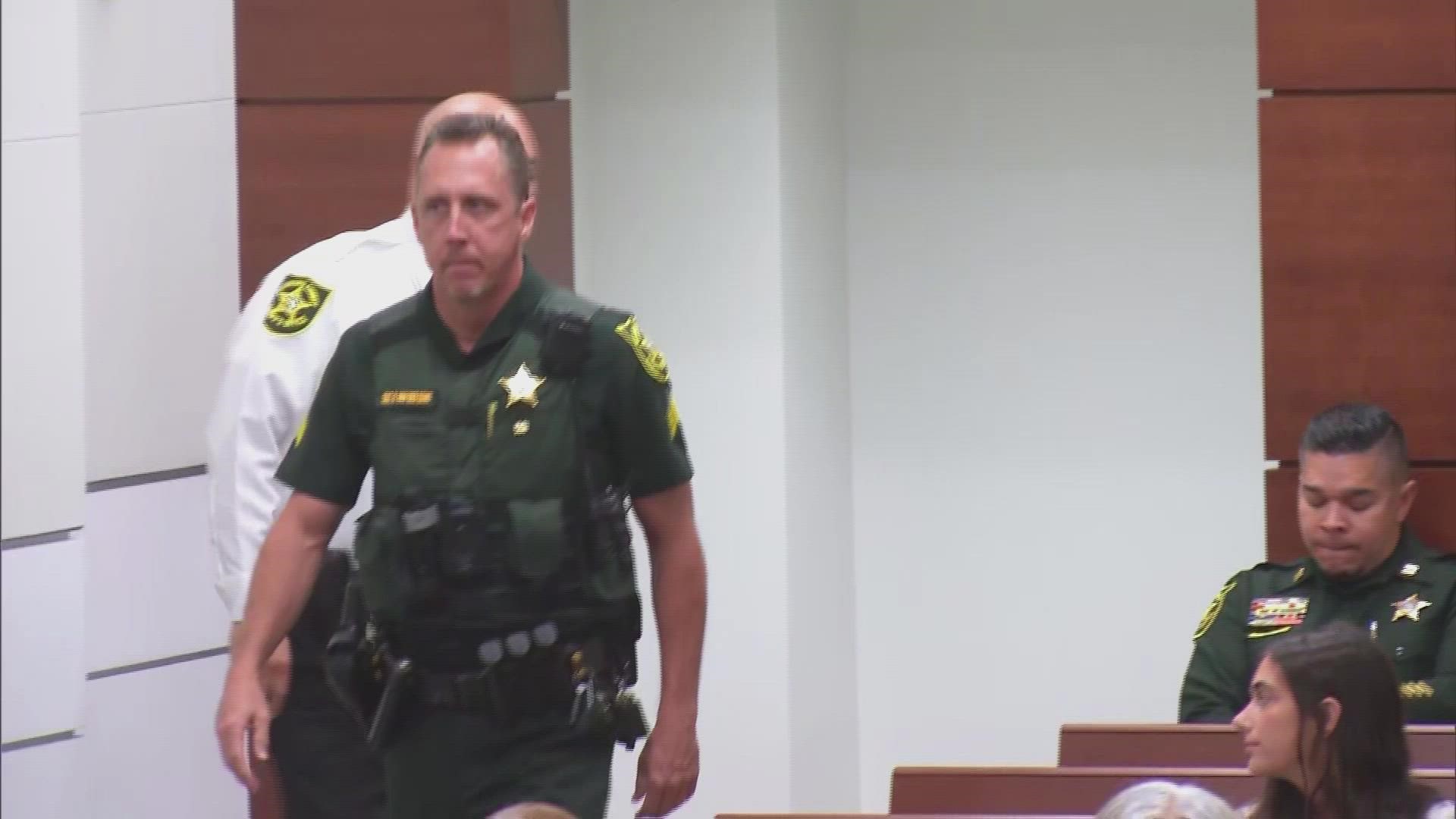FORT LAUDERDALE, Fla. — Law enforcement officers who charged into Parkland's Marjory Stoneman Douglas High School minutes after Nikolas Cruz fatally shot 17 in one of its buildings described for jurors Friday the horrific scene they encountered.
Two Coral Springs police officers and a Broward County sheriff's deputy told of finding dead, dying and wounded students and staff members at the three-story classroom building where Cruz massacred 14 students and three staff members and wounded 17 more with an AR-15 semi-automatic rifle on Feb. 14, 2018.
“I observed a child dead on the ground on the left and there was smoke and dust in the air,” Broward Sgt. Richard Van Der Eems said in the flat, professional tone the officers all used.
Worried that the shooter might still be in the building, he said he pointed his gun to provide cover as other officers led students and teachers out of the building and carried out the wounded. They didn't know that Cruz had fled the building about three minutes earlier.
Van Der Eems and other officers entered the building immediately after arriving, about 10 minutes after the shooting began. Then-Broward Deputy Scot Peterson, the school's security officer, is charged with child neglect for staying outside while Cruz continued shooting. He has pleaded not guilty and is scheduled for trial early next year. Other deputies were disciplined for failing to go into the building when they arrived.
The police in Uvalde, Texas, are being criticized for waiting more than an hour before confronting a gunman who killed 19 students and two teachers at an elementary school in May.
RELATED: Parkland school shooter acted casually after fleeing, video shows on day 4 of penalty trial
Coral Springs Capt. Nicholas Mazzei said that as he ran to the building, he found the body of assistant football coach Aaron Feis, who was shot trying to stop Cruz.
“I checked him for vitals, realized he was deceased," Mazzei said.
He said he then went inside and found athletic director Christopher Hixon, who later died of wounds he received while confronting Cruz. He said they talked, but prosecutors did not ask what was said.
Coral Springs Detective David Alfin said he climbed the stairs to the third-floor landing, where he found Cruz's rifle and vest next to the body of 14-year-old Jaime Guttenberg.
“I checked her vital signs for breath and pulse and I found none,” he said, adding that he checked two or three times. “We held there for a moment and ... heard a voice from the hallway.”
He, Van Der Eems and others went to the third floor, where they found other bodies and a severely wounded Anthony Borges, who was lying in the middle of the hallway, raising his hand and trying to yell to get their attention.
The officers were shown photos of the victims they saw, but those weren't immediately shared with the jury.
On Thursday, it was revealed that Cruz walked casually into a sandwich shop after the brutal murder of 14 students and three staff members. He showed no signs of stress or nervousness, according to video played at his penalty trial.
He then went to McDonald's where he was unsuccessful in catching a ride from the brother of a girl he had seriously wounded, the Associated Press reports.
Cruz's attempt to escape after the Feb. 14 mass shooting was the highlight of Thursday's abbreviated court session. Friday's session concludes a week of often emotional testimony covering the attack and Cruz's attempted escape.
Cruz, 23, pleaded guilty in October to 17 counts of first-degree murder. The jury must only decide if he should be sentenced to death or life without parole for the nation’s deadliest mass shooting to go before a jury.
Nine other gunmen who killed at least 17 people died during or immediately after their shootings, either by suicide or police gunfire. The suspect in the 2019 slaying of 23 people at a Walmart in El Paso, Texas, is awaiting trial.
When jurors eventually get the case, probably in October or November, they will vote 17 times, once for each of the victims, on whether to recommend capital punishment.
For each death sentence, the jury must be unanimous or the sentence for that victim is life. The jurors are told that to vote for death, the prosecution’s aggravating circumstances for that victim must, in their judgment, “outweigh” the defense’s mitigators. A juror can also vote for life out of mercy for Cruz. During jury selection, the panelists said under oath that they are capable of voting for either sentence.
10 Tampa Bay's Jordan Highsmith contributed to this article.

